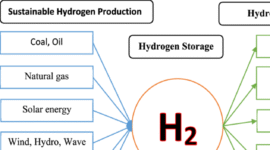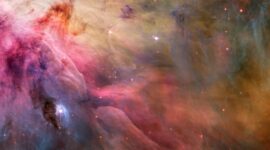31st October 2025, Jiuquan Satellite Launch Center
In a historic announcement that has electrified the nation and the global space community, the China Manned Space Agency (CMSA) has officially revealed the three-person crew for the Shenzhou-21 mission, slated for launch in late November. The crew selection is particularly momentous as it includes the youngest astronaut China has ever sent into orbit, marking a significant generational shift in the nation’s human spaceflight ambitions. The announcement, made at the Jiuquan Satellite Launch Center in the Gobi Desert, underscores China’s rapidly advancing and increasingly confident space program, with the Tiangong Space Station serving as its crown jewel.
The Shenzhou-21 mission will be the seventh crewed expedition to the Tiangong Space Station. The trio of taikonauts, who will live and work aboard the orbital outpost for approximately six months, was introduced to the press and public in a ceremony brimming with national pride. The commander of the mission is Veteran taikonaut Li Guang, 48, a former People’s Liberation Army Air Force pilot with two previous spaceflights to his credit. His calm demeanor and extensive experience, including multiple spacewalks, make him the ideal leader for this long-duration mission. He will be joined by Mission Specialist Dr. Zhang Wei, 45, a renowned astrophysicist whose research focuses on high-energy cosmic phenomena. Dr. Zhang represents the growing scientific core of the taikonaut corps, selected for his expert knowledge rather than a military pilot background.
The third member, and the focus of intense media attention, is Engineer Wang Ming, 34, who will become the youngest Chinese astronaut in history. Hailing from a new generation of space professionals, Wang is a prodigious talent in aerospace engineering, having played a crucial role in the design of several Tiangong modules before being selected for the astronaut corps. His inclusion signals a strategic move by CMSA to inject fresh perspectives and technical expertise directly into its orbital operations. As Chief Scientist for the CMSA, Dr. Alina Kowalski, an international partner on the Tiangong, stated, “The selection of a younger astronaut like Wang Ming is a clear indicator of program maturity. It shows China is building a sustainable pipeline of talent, looking beyond the initial pioneer phase to a future of routine and complex space operations.”
The primary objectives of the Shenzhou-21 mission are multifaceted, blending advanced scientific research with critical station maintenance and technology demonstrations. A key highlight of their agenda will be the installation and activation of the new “Xuntian” Survey Space Telescope’s docking module. While the Xuntian telescope itself will fly in close proximity to Tiangong, it is designed to periodically dock with the station for servicing, upgrades, and data retrieval by the crew. This ambitious undertaking will require a series of complex robotic arm operations and potentially extravehicular activities (spacewalks) led by Commander Li. Mission Commander Li Guang, addressing the media, said, “It is the honor of a lifetime to lead this mission. Our crew is united and prepared to execute our duties with precision. We are eager to conduct the science that will benefit humanity and to ensure our home in the stars is prepared for the future.”
Scientifically, the mission promises a rich harvest of data. Dr. Zhang will oversee more than 100 experiments across disciplines including materials science, fluid physics, and life sciences. A significant portion of the research will investigate the effects of long-duration microgravity on the human body, data that is crucial for China’s stated goal of sending crewed missions to the Moon by 2030 and eventually to Mars. Furthermore, the crew will conduct pioneering experiments in quantum communications and dark matter detection, leveraging the unique environment of space. *Lead Mission Scientist for the Shenzhou-21 expedition, Professor Chen from the Chinese Academy of Sciences, elaborated, “The experiments planned for this mission are unprecedented in their scope. We are moving from demonstration-based science to discovery-driven research. The data on gravitational wave backgrounds and tissue regeneration in microgravity could redefine our understanding of fundamental physics and biology.”*
The inclusion of the 34-year-old Wang Ming is being widely interpreted as a masterstroke in public engagement and a long-term investment. By sending its youngest-ever taikonaut, China is inspiring its vast youth population, making the cosmos feel more accessible to a new generation. Wang’s fluency with the station’s cutting-edge systems, many of which he helped design, will be an invaluable asset. In a youthful and energetic tone, Wang Ming shared his excitement: “I grew up watching Shenzhou missions on television, dreaming of this day. To now have the opportunity to not just visit Tiangong, but to work on systems I once helped design on paper, is a dream come true. I hope to show every young person in China that the stars are within our reach.”
The launch of the Shenzhou-21 spacecraft atop a Long March-2F rocket is currently scheduled for the third week of November 2025 from Jiuquan. Upon docking with the Tiangong Space Station, the Shenzhou-21 crew will overlap briefly with the outgoing Shenzhou-20 crew, conducting a handover before the latter returns to Earth. This mission solidifies Tiangong’s status as a permanently crewed, world-class scientific laboratory. With this announcement, China has not only filled its crew roster but has also boldly declared its future trajectory, one that is younger, more scientific, and more ambitious than ever before. *As CMSA Director Hao Chun concluded in his announcement speech, “Shenzhou-21 is more than a mission; it is a bridge to our future. With this crew, we are blending the wisdom of experience with the brilliance of youth, ensuring that the Chinese space program will continue to scale new heights for decades to come.”




